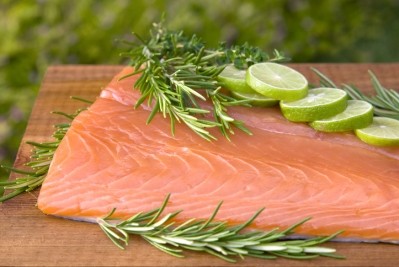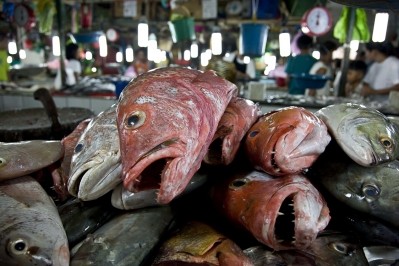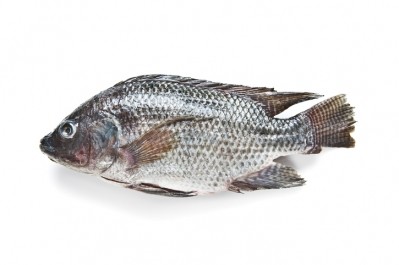Cost-competitive microalgae-based tilapia feed improves growth metrics
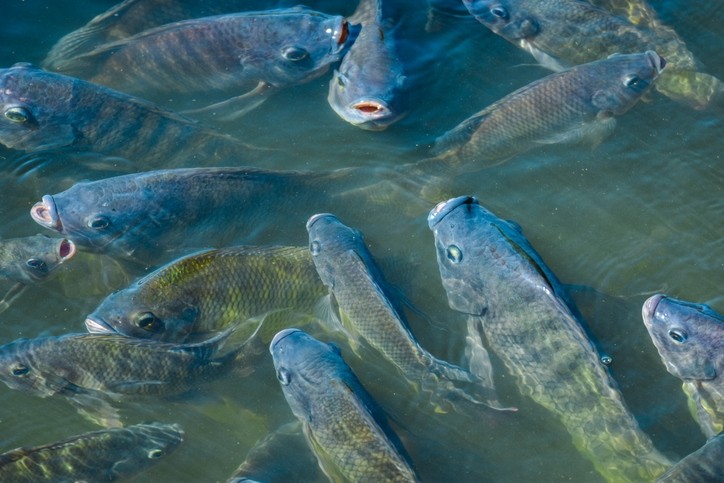
The new fish-free feed demonstrates across-the-board gains in sustainability, performance, economic viability, and human health, they said.
“This is a potential game-changer for shifting aquaculture to more sustainable practices,” said Pallab Sarker, lead author of a Scientific Reports article on this research published yesterday [November 12].
Sarker, an associate research professor in environmental studies, works alongside Professor Anne Kapuscinski, a sustainability science and policy expert, to co-lead an ecological aquaculture research facility at the UCSC Farm.
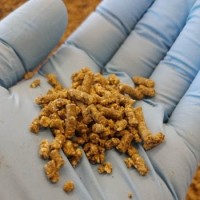
Their lab focuses on integrating circular economy concepts into aquatic food systems, particularly as a means of breaking aquaculture’s reliance on wild-caught forage fish for feed ingredients.
In their trial, they combined two commercially available microalgae, to produce “a high-performing” fish-free feed for Nile tilapia (Oreochromis niloticus)—the world’s second largest group of farmed fish.
“We substituted protein-rich defatted biomass of Nannochloropsis oculata (leftover after oil extraction for nutraceuticals) for fishmeal and whole cells of docosahexaenoic acid (DHA)-rich Schizochytrium sp. as substitute for fish oil.”
The new fish-free feed formula was then tested against a conventional feed and a few other blends in an experiment where 480 Nile tilapia were cultivated for six months.
Microalgal diets included defatted N. oculata to replace 33%, 66% or 100% of fishmeal (FM) and whole cell Schizochytrium sp. to replace 100% of fish oil (FO).
"We measured effects of the four diets on growth metrics, in vitro protein digestibility, feed conversion ratio (FCR), protein efficiency ratio (PER), and fillet deposition of n-3 long-chain polyunsaturated fatty acids (LC PUFAs) and minerals. Furthermore, we conducted a hedonic analysis to estimate the market price of defatted N. oculata meal and whole cell Schizochytrium sp., feed costs, and the economic feed conversion ratio (ECR)."
FCR, weight gain
Tilapia fed the fish-free diet for 184 days displayed significantly better final weight, weight gain, percent weight gain and specific growth rate than fish fed the reference diet, which contained FM and FO levels typically found in commercial tilapia diets, observed the team.
The trial feed also yielded higher fillet lipid, DHA, and protein content but not significantly different.
"Growth rates were linear throughout the experiment and weights measured for the fish-free diet diverged from those for the reference diet by day 128.
"Fish fed fish-free feed showed an improved food conversion ratio and protein use efficiency ratio though differences among diets and were not statistically significant. We detected no difference in survival rate among all diets and all fish appeared healthy (no visual signs of illness or deformities) at the end of the experiment.
"The whole-body proximate composition did not significantly differ across the dietary treatments; lipid contents ranged from 2 to 5% and protein contents ranged from 13 to 17% across the four treatments."
Furthermore, they said the microalgae derived feed had the highest degree of in-vitro protein hydrolysis and protein digestibility, with this suggesting protein originating from defatted N. oculata biomass was the most digestible when in the presence of highly digestible Schizochytrium sp., presumably due to the latter triggering certain digestive enzymes, release and activity.
"Thus, the combination of defatted N. oculata biomass and Schizochytrium sp. appears to be better suited to the digestive enzymes present in tilapia digestive systems than conventional diets with FMFO; and the presence of Schizochytrium sp. may support more efficient digestion of the fish free-feed at the higher inclusion levels of N. oculata defatted biomass."
However, further research is necessary, said the team, to elucidate the digestive enzyme profiles present under different dietary regimes and to assess the differences in the digestibility of microalgal fish-free feeds compared to conventional feed with FMFO.
Cost-effectiveness
The research shows promising results for the potential cost-competitiveness of their new formula, too.
“The median economic conversion ratio of the fish-free feed ($0.95/kg tilapia) was less than the reference diet ($1.03/kg tilapia), though the median feed cost ($0.68/kg feed) was slightly greater than that of the reference feed ($0.64/kg feed)."
Sarker said what fish-free feed developing using soy and corn and other ingredients is standard, the challenge with that is the fatty acid profile of the filet.
“Terrestrial vegetable oils lack long-chain omega-3 fatty acids, but from the combination of these microalgae, we found a higher amount of deposition from DHA into tilapia filets, which is good for human health.”
Feed produced using agricultural crops can also have an imbalance of limiting amino acids and lower palatability and digestibility, resulting in reduced fish growth, she added.
The new fish-free feed avoided these problems.
Another improvement the new microalgae-based formula offers over crop-derived ingredients is that it reduces the myriad sustainability issues associated with producing agricultural products for animal feed, rather than direct human consumption, said the team.
“Our work is a step toward eliminating reliance on fishmeal and fish oil with evidence of a cost-competitive microalgae-based tilapia feed that improves growth metrics and the nutritional quality of farmed fish.”
Sarker and Kapuscinski now hope to leverage what they have learned to develop a similar diet for rainbow trout.
Source: Scientific Reports
DOI: https://doi.org/10.1038/s41598-020-75289-x
Title: Microalgae-blend tilapia feed eliminates fishmeal and fish oil, improves growth, and is cost viable
Authors: PK Sarker, AR Kapuscinski, B McKuin, DS Fitzgerald, HM Nash, C Greenwood
